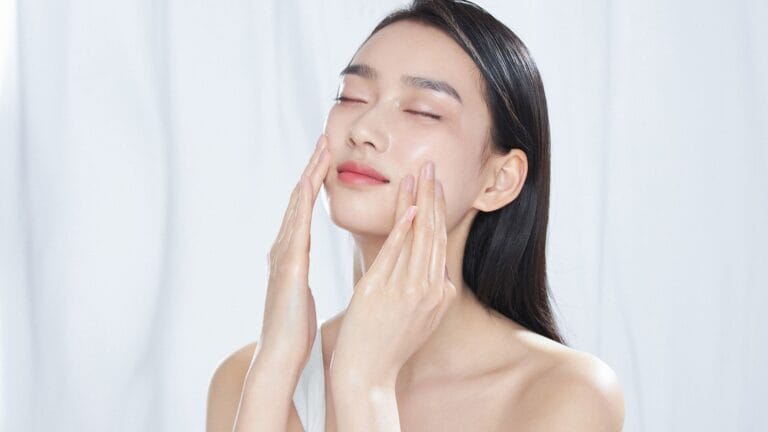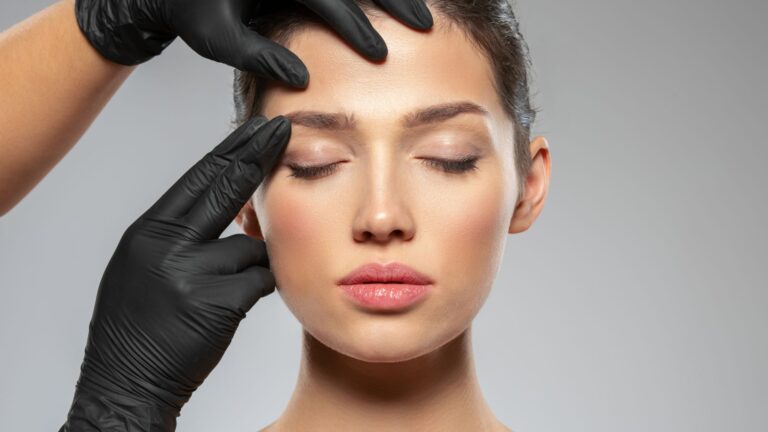Prebiotics vs Probiotics vs Postbiotics in Skincare
Microbiome skincare is everywhere. Your Instagram feed shows probiotic serums, your favorite brands launch prebiotic moisturizers, and everyone talks about feeding your skin’s bacteria.
Prebiotics, probiotics, and postbiotics work through completely different mechanisms. Most people treat them as interchangeable wellness buzzwords. They are not.
Prebiotics feed bacteria already living on your skin. Probiotics introduce new bacterial strains. Postbiotics skip bacteria entirely and deliver their beneficial byproducts directly. Each approach targets different skin concerns through distinct biological pathways.
Understanding these differences means choosing products based on your skin’s actual needs rather than marketing appeal.

What Are Prebiotics in Skincare and How Do They Work?
Prebiotics are nutrients that feed beneficial bacteria already living on your skin. Think of them as fertilizer for your skin’s microbial garden. They help good bacteria multiply and create an environment where harmful microorganisms cannot thrive.
The mechanism is straightforward. Beneficial bacteria consume prebiotics and produce helpful compounds like short-chain fatty acids. These compounds lower your skin’s pH, strengthen the barrier function, and create hostile conditions for problematic bacteria. Harmful bacteria cannot digest most prebiotics, so they get outcompeted over time.
Best Prebiotic Skincare Ingredients That Actually Work
Inulin (from chicory root) Specifically feeds Lactobacillus and Bifidobacterium species. Clinical studies demonstrate improved hydration and reduced aging signs within 4-6 weeks. This ingredient has the most research backing.
Alpha-glucan oligosaccharide Creates hostile conditions for eczema-triggering bacteria while nourishing beneficial strains. Particularly effective for sensitive, reactive skin types.
Oligosaccharides (FOS, GOS) Provides broad-spectrum nutrition for multiple bacterial strains. Look for fructooligosaccharides or galactooligosaccharides on ingredient lists.
How to Use Prebiotic Skincare
Start with one product containing prebiotics. Serums or moisturizers work best because they stay on your skin longer than cleansers. Use every third night for the first week.
Prebiotics can cause temporary breakouts as your microbiome rebalances. This happens because bacterial populations are shifting, not because the products are harmful. Most people see this initial adjustment period resolve within 2-3 weeks.
Results take 4-6 weeks minimum. Your skin’s bacterial ecosystem needs time to multiply and establish dominance over harmful strains. Most people notice less sensitivity and improved texture within 2-3 weeks of consistent use.
Probiotic Skincare: Do Products Really Contain Live Bacteria?
Probiotic skincare theoretically adds beneficial bacteria to restore your skin’s microbial balance. The marketing promise sounds logical, but the formulation reality is more complex.
Most commercial probiotic skincare does not contain living bacteria. Traditional cosmetic preservatives kill bacteria indiscriminately, including the beneficial strains you want to add. Instead, these products contain bacterial extracts, lysates (broken-down bacterial components), or fermentation byproducts.
Genuine live probiotics require expensive formulation techniques like microencapsulation or freeze-drying. These processes make authentic probiotic products cost 50-100% more than comparable skincare. Most brands use probiotic terminology for marketing while delivering something closer to postbiotic benefits.
Which Probiotic Skincare Ingredients Have Clinical Research?
Lactobacillus ferment The most common probiotic ingredient in skincare products. Reduces inflammation and supports barrier repair. Provides both probiotic and postbiotic benefits depending on the formulation.
Bifidobacterium lysate A preserved form of beneficial bacteria that remains stable in cosmetic formulations. Effective for reducing skin reactivity and improving hydration. Well-tolerated by sensitive skin types.
Lactobacillus plantarum Clinical trials show 50% reduction in acne lesions with topical application. One of the few probiotic strains with solid research supporting direct skin benefits.
Using Probiotic Products Effectively
Introduce probiotic products slowly. Start every third night and increase frequency as your skin tolerates the change. Store products according to label instructions because some require refrigeration to maintain bacterial viability.
Check your current routine for ingredients that neutralize bacterial activity. Alcohol denat, high concentrations of essential oils, and antimicrobial ingredients like tea tree oil can eliminate probiotic benefits. Over-cleansing also removes beneficial bacteria faster than topical products can replace them.
Do not expect dramatic changes in two weeks. Genuine microbial ecosystem shifts take 6-8 weeks to produce visible results.
What Are Postbiotics in Skincare? (Fastest Results)
Postbiotics are beneficial compounds that bacteria produce during fermentation. Think of them as bacterial waste products that happen to be excellent for your skin. These include enzymes, peptides, organic acids, fatty acids, and other metabolites.
Postbiotics solve major formulation challenges that plague probiotic products. They remain stable at room temperature, work with traditional preservatives, and do not require special storage. You get bacterial benefits without dealing with live microorganisms.
Traditional beauty treatments like fermented rice water were essentially postbiotic skincare. Modern products isolate and concentrate these same beneficial compounds into serums and creams.
What Postbiotics Do for Your Skin
Reduce inflammation through compounds like beta-glucan and naturally occurring hyaluronic acid produced during fermentation.
Strengthen barrier function with fermentation-derived ceramides, fatty acids, and amino acids that integrate directly into your skin’s protective structure.
Provide gentle exfoliation from naturally occurring lactic and glycolic acids without the irritation potential of synthetic chemical exfoliants.
Identifying Postbiotic Ingredients
Look for ingredients ending in “ferment,” “ferment lysate,” or “ferment filtrate” on product labels. Common examples include Saccharomyces ferment, Lactobacillus/rice ferment, and Galactomyces ferment filtrate (also known as Pitera).
Postbiotics often provide the fastest visible results. Many people notice improved texture and radiance within 1-2 weeks. This makes them ideal for people wanting immediate benefits or those with skin too sensitive for live bacteria.
Now that you understand how each category works, here’s how to choose between them.
Prebiotics vs Probiotics vs Postbiotics: Which is Best for Your Skin?
Here’s how these three approaches actually differ:
| Prebiotics | Probiotics | Postbiotics | |
|---|---|---|---|
| What they do | Feed existing skin bacteria | Add new bacteria (theoretically) | Deliver bacterial byproducts directly |
| Formulation reality | Straightforward to make | Most contain extracts, not live bacteria | Easy to produce and preserve |
| Stability | Very stable, long shelf life | Often unstable, may need refrigeration | Very stable, works with preservatives |
| Cost | Moderate | Higher due to complex formulation | Moderate |
| Results timeline | 4-6 weeks | 2-4 weeks | 1-2 weeks |
| Best for | Healthy skin wanting optimization | Disrupted or problem skin | Sensitive skin or immediate results |
| Risk level | Low, temporary breakouts possible | Moderate, requires proper storage | Lowest, well-tolerated |
Quick Reference: Which ‘Biotic’ Is Right for You?
How to Use Microbiome Skincare Products (Complete Guide)
Timeline and Implementation
Week 1-2: Start with one product Use your chosen microbiome product every third night. Monitor comfort level, not just appearance. Note any changes in how your skin feels throughout the day.
Week 3-4: Increase frequency Progress to every other night if you are tolerating the product well. Pay attention to reduced reactivity and improved comfort. These changes often occur before visible improvements in texture or clarity.
Week 5-8: Evaluate results Most meaningful changes occur between weeks 6-8. Look for improved comfort, less sensitivity, and better texture before expecting dramatic visual transformations.

Sample routine:
Prevention approach (Prebiotics):
- AM: Gentle cleanser → Vitamin C → Prebiotic moisturizer → SPF
- PM: Gentle cleanser → Prebiotic serum → Night moisturizer
Problem skin restoration (Probiotics):
- AM: Gentle cleanser → Light moisturizer → SPF
- PM: Gentle cleanser → Probiotic treatment (3x/week) → Barrier repair cream
Sensitive skin support (Postbiotics):
- Morning: Water rinse → Postbiotic essence → Gentle moisturizer → SPF
- Evening: Gentle cleanser → Postbiotic serum → Nourishing night cream
Microbiome Skincare Mistakes That Sabotage Your Results
Over-cleansing destroys microbiome benefits faster than any product can replace them. Cleansing twice daily with active ingredients removes beneficial bacteria constantly. Cleanse thoroughly once (evening), and use water or micellar water in the morning.
Incompatible actives create bacterial wastelands. Benzoyl peroxide, high-concentration salicylic acid, and alcohol-based products eliminate both harmful and beneficial bacteria indiscriminately. Use these ingredients strategically (2-3 times weekly) and never on the same nights as your microbiome products.
Impatient product switching undermines results. Your skin’s bacterial ecosystem requires 6-8 weeks to establish meaningful changes. Most people abandon effective products at 3-4 weeks, right before improvements become visible.
Wrong application order neutralizes benefits. Microbiome ingredients need direct skin contact to work effectively. Apply them on clean skin before oils, silicones, or heavy creams that create barrier films preventing penetration.
Signs You Need to Reassess Your Approach
- Increased breakouts after 6+ weeks of consistent use
- Persistent irritation beyond the initial adjustment period
- No changes whatsoever after 8 weeks of proper use
- Worsening sensitivity or new reactions
Summary
Microbiome skincare works when you choose the right approach for your current skin state and use it consistently for 6-8 weeks. Most people see initial improvements in comfort and reduced reactivity within 2-3 weeks, followed by visible texture and clarity changes.
Success requires honest assessment and patience. Your skin’s bacterial ecosystem has been developing throughout your entire life. It needs adequate time to rebalance and establish new equilibrium.
Choose products based on your skin’s actual needs rather than marketing claims. Assess your skin honestly, select the approach that makes sense for your situation, and commit to the timeline required for meaningful results.








